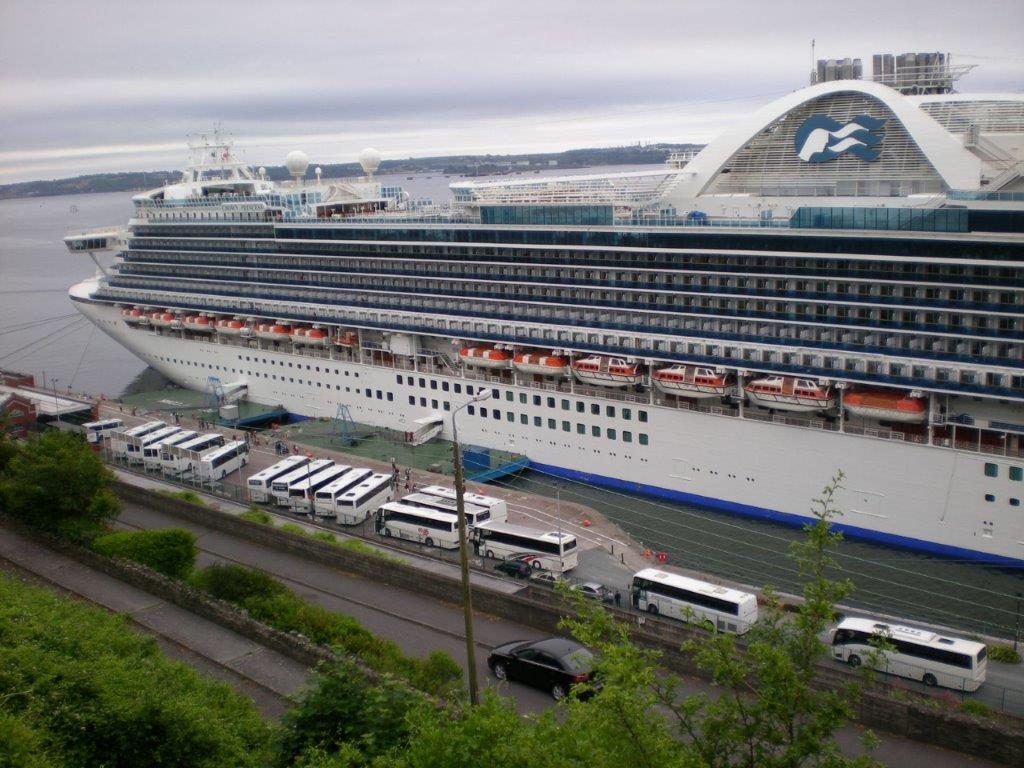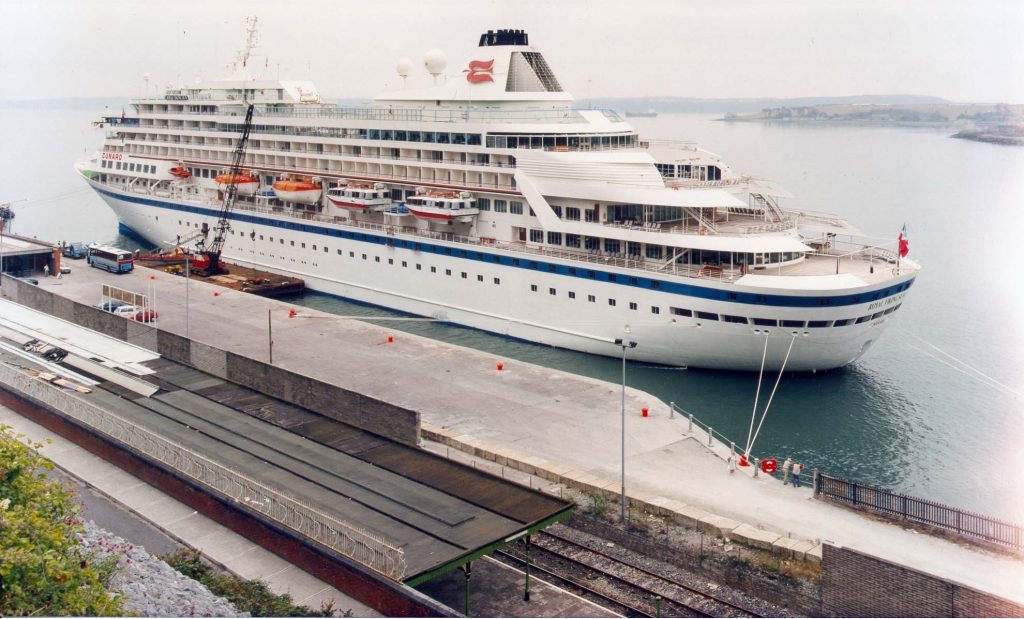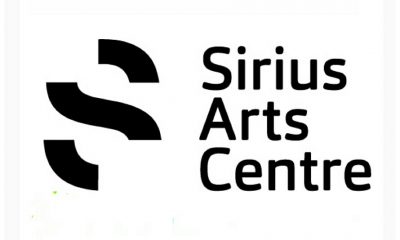Local News
Clarification from the Port of Cork Company Concerning the Closure of Cobh Deep Water Quay for Short periods During Cruise Liner Visits
- Share
- Tweet /home/eastcork/public_html/wdir/wp-content/plugins/mvp-social-buttons/mvp-social-buttons.php on line 68
https://www.cobhedition.com/wdir/wp-content/uploads/2019/05/CrownPS2-1000x600.jpg&description=Clarification from the Port of Cork Company Concerning the Closure of Cobh Deep Water Quay for Short periods During Cruise Liner Visits', 'pinterestShare', 'width=750,height=350'); return false;" title="Pin This Post">
The Port of Cork Company has decided, for safety and port security reasons, to close the Deepwater Quay in Cobh during the berthing of Cruise Vessels. This operation, which mainly occurs in the early morning, takes up to 30 minutes. Once completed the quay re-opens to the public and access resumes.

The Port of Cork Company (PoCC) is commercial semi-state company, operating all six shipping modes. Over the last 5 years the cruise business has grown by over 30%. While this growth is hugely positive for both the Port and the region, it does come with its challenges.
According to Brendan Keating, Port of Cork Chief Executive; ‘Cruise ship visits to Cobh have steadily increased since the late 1980’s. The average size of cruise ship visiting Cobh in the 1980’s and up until early 2000 was approximately 200 metres in length and had passenger numbers in the region of 800 – 1000 on board. This brought on average of 6-8 coaches onto the quayside to handle the shore excursions.’
He continued: ‘This has changed greatly in the last 5 years and in 2019 the Port of Cork will accommodate 104 vessel calls, with passenger numbers of more than 200,000.’
Many of the cruise liners that now call to the Port of Cork are up to 300 metres long and have over 3,000 passengers on board. With this increased volume of cruise passengers arriving, naturally the shore side logistics have also increased with anything from 30 to 50 coaches often required to support the passenger excursions.

The shore logistics necessary to accommodate such cruise calls, which include, coach arrivals and departures on the quay, passengers disembarking and boarding coaches and the safe marshalling of pedestrians is all managed on a parking apron of 100 x 20 metres. The biggest challenge for the Port of Cork at this time is quite simply, safety for everyone.
In tandem with the growth in the cruise business, measures employed to safeguard PoCC staff, vessel crew and passengers and the general public have also increased.
Examples of some recent safety measures taken by the Port of Cork include the installation of fixed railings along the quayside, the creation of a designated walkway so passengers and the public can clearly follow the entry and exit points, the purchase of uprated gangways, and a traffic management plan has been implemented to cope with the movement of coaches in such a confined area.
Several high-risk areas have also been identified, such as the Pilot embarkation at sea, turning large vessels in confined areas and mooring operations. The Port has implemented controls in all identified high-risk areas to reduce the likelihood of accidents or incidents.
Brendan Keating said: ‘During berthing operations, the ship will send mooring ropes ashore that are connected to mooring bollards and depending on weather conditions on the day, may use up to 10 mooring lines to secure the vessel. A critical period in any mooring operation occurs just as the ropes are being tightened when first connected to the shore bollards. At this time a single rope may come under pressure due to a sudden ship movement, a strong wind gust or if excessive pressure is applied from the mooring winch operator. In practice, while mooring rope failures are rare and some new ropes are constructed with a material to prevent “snap back”, the risk still needs to be managed.
Like every port around the globe, the Port of Cork does not take risks, especially when it comes to the safety of employees, the public or visitors and for this very reason, the Port of Cork close’s off the quay during arrival operations. The quay is normally closed for a period of approx.30 minutes and during this period the arriving shore excursion coaches’ are marshalled into place while the quay is free of pedestrians, thus reducing any risk of a traffic accident.
The Port of Cork has always endeavoured to uphold tradition, and when it is safe and appropriate the Port allows access through the quay for the rest of the liners visit. It is by no means the intention of the Port to obstruct members of the public from accessing the deep water quay or to diminish the enjoyment gained by the public from observing such magnificent liners up close. It is as explained, for the safety of everyone involved and the Port of Cork will reserve the right to close off the quay when required for port operations and health and safety reasons.
Following some confusion as to the Ports reasoning for temporarily closing public access to the quay, the question of land ownership and rights of way have also arisen regarding the Deepwater Quay in Cobh. For the purposes of clarity, the title of the Port of Cork Company to Deepwater Quay, Cobh, comprises a combination of registered (Land Registry) and unregistered (Registry of Deeds) title dating back to the last century and as such the management of the berth is under the control of the Port of Cork Company, regulated by the Port Byelaws. Despite erroneous claims to the contrary, Port of Cork Company is the freehold owner of Deepwater Quay.
Mr Keating once again clarified; ‘While the Port of Cork Company (and previously Cork Harbour Commissioners) have been willing to permit access by the public to Deepwater Quay, the Port has always controlled such access where required in the interests of health and safety, security and the smooth and safe management of shipping traffic at Deepwater Quay. This has included the use by the Port of its statutory power under Harbours legislation to create and enforce bye-laws regulating access to Deepwater Quay while ships are being embarked or disembarked and permitting the Harbour Master to request persons to leave the quay at such times. No public right of way exists over Deepwater Quay.’
Without doubt 2019 will be a record year for the Port of Cork with the numbers of scheduled calls the highest the port has ever seen. Capable of handling some of the largest liners, carrying high volumes of passengers, the Port of Cork anticipates total passenger numbers to be 200,000 and 80,000 crew.
Fourteen cruise liners will make their maiden calls to the Port this season which is always encouraging, however the number of repeat visits from cruise lines shows their dedication to Cobh. The increased cruise calls to Cork are indicative of the wider global cruise business which has seen huge growth. In 2018 an estimated 27.2 million people took a cruise on over 450 cruise ships worldwide. With the global cruise ship order book for new build contracts reaching 113 ships between now and 2027, Cork cruise business is set to grow further in the coming years and the Port of Cork is eager to attract these new ships.
On average, cruise ship passengers spend €81 during their time in Cork; with 42% of this money being spent on shopping, 32% on excursion travel and 17% on food and drink. Typically crew spend approximately €29, with most of the money being spent on food and drink and/or shopping.
To find out dates and arrival times of cruise liners calling to Port of Cork please visit www.portofcork.ie for the complete 2019 schedule.
-

 Local News3 weeks ago
Local News3 weeks agoLusitania Commemoration events to take place in Cobh on Monday 6th May
-

 Local News2 weeks ago
Local News2 weeks agoGet to Know Cobh Library
-

 Local News4 days ago
Local News4 days agoCobh-based TV Production start-up, Great Island Productions, has launched a crowdfunding campaign through the UK-based platform, Crowdcube
-

 Local News2 hours ago
Local News2 hours agoCorcoran’s Centra in Rushbrooke Links, Cobh revealed as store that sold winning ticket!
-

 Announcements3 weeks ago
Announcements3 weeks agoCobh Flower and Horticulture Club next meeting Monday 13th May
-

 Local Soccer2 weeks ago
Local Soccer2 weeks agoRESULT: Cobh Ramblers 2-1 Bray Wanderers
-

 Local News3 weeks ago
Local News3 weeks ago‘Paint Your Town Red’ – Up to €60,000 Worth of Paint to Be Given to Local Communities‘
-

 Events & Entertainment2 weeks ago
Events & Entertainment2 weeks agoSIRIUS ARTS EXHIBITION: Denilson Baniwa
-

 Events & Entertainment3 days ago
Events & Entertainment3 days agoInistioge Choir to Sing in Cobh
-

 Local News5 days ago
Local News5 days agoMercy University Hospital Cork introduces Kids Packs to support families in the midst of End of Life Care








